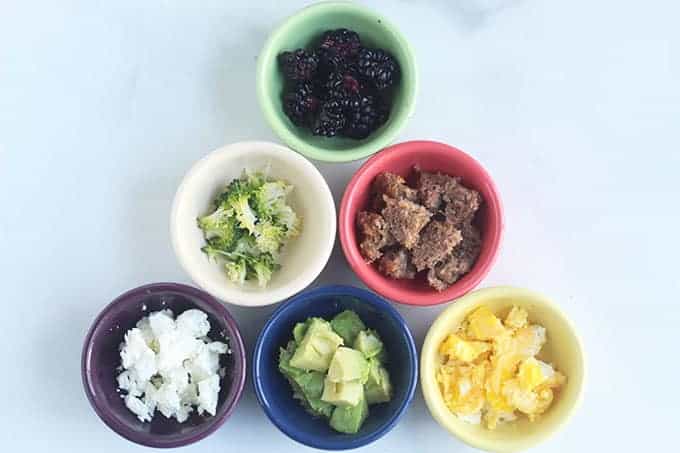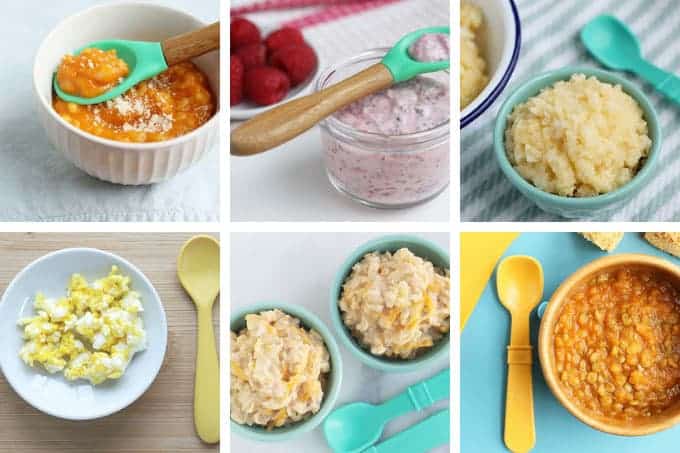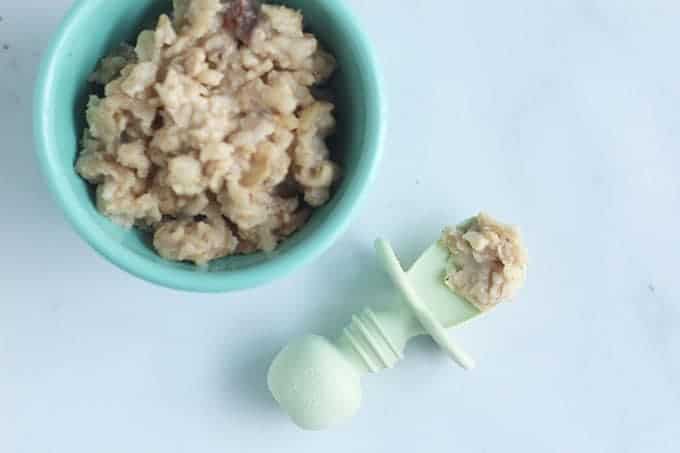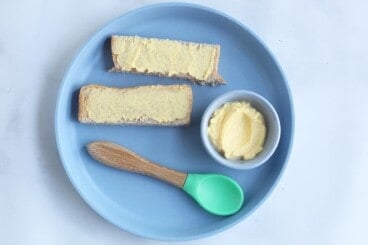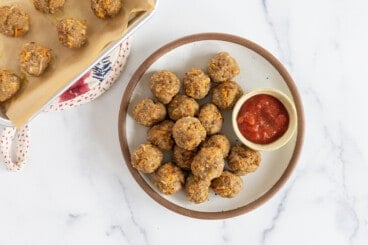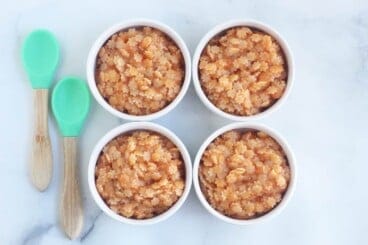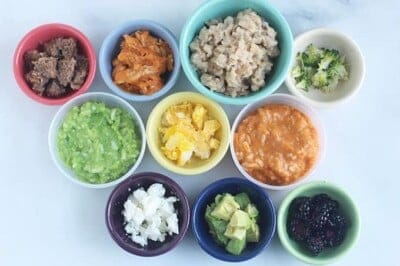Stage 3 Baby Food
This stage of food for babies aged about 9 months and up includes thicker mashed foods and purees with a lot of texture. The foods are still very soft, but they are moving towards table foods and may include some finger foods. There will usually be bits of food for baby to chew and may include some foods that baby can pick up with her fingers. These early finger foods include foods such as soft avocado, very soft scrambled eggs, mashed meatballs, grains including rice and rolled oats, slightly mashed raspberries. TIP: Brush up on Baby Food Stages 101 here.
Easy Foods for 9-12 Months
For this age group, you can make baby food just for them—including thicker, more textured Baby Food Combinations—and also start to include more foods from your family meals if you haven’t been doing that already. The goal in this stage is to continue to expose baby to a range of flavors and textures so she continues to have lots of opportunities to learn and develop her ability to eat. TIP: Check out my favorite easy method for serving nutrient-rich grains and pasta to this age group at the bottom of this post! My oldest was SO hungry at this age and this was my go-to way to make sure she was satisfied before bed.
Stage 3 Recipes to Try
Here are some of my very favorite recipes for this age group. This is a nice place to start if you’re wanting to make food either just for baby, or to feed to the entire family. (Also: You can also mash other soft foods you have at the table. Anything you offer should be very easy to squeeze between your fingers.)
2-Ingredient Pancakes, diced up Alphabet Soup Apple Oatmeal Baked Oatmeal Cups Butternut Squash Risotto Carrot Cake Oatmeal Cauliflower Mac and Cheese Coconut Chia Pudding Healthy Meatballs, slightly mashed Instant Pot Butter Chicken Roasted Sweet Potato Spinach Pesto Pasta with Peas Slow Cooker Black Bean Soup Vegetarian Lentil Soup
TIP: Offer more flavors of baby food without the work with the awesome Intro to Veggies Pack from Amara Organic Baby Food. You get 30 meals (for less than $2 a day!) packed with a wide range of veggies including greens, squash, peas, sweet potatoes and more—no chopping, blending or steaming required! (sponsored)
Best Tips for Stage 3 Foods
Aim to include a range of textures and flavors so baby has a wide variety of food experiences. It is normal for some babies to like certain textures more than others, but do your best to continue offering all foods (they may just need more practice) and ensure that the food you offer is easy to eat. You can let baby feed themselves with their hands, offer preloaded spoons (see the image above), bites of food on a spoon, or a combination of the methods. With any of them, allow baby to decide when the meal is done, so end it when she turns her head, signs “all done” or gives another signal that the meal is over. Follow baby’s cue’s for hunger and fullness. Remember that there is a natural range among babies as far as how into food they are. Yours may be more or less into it, and that can be normal. Babies continue to rely on breastmilk and formula for their main nutritional needs until age 1, though solids gradually become more and more important—and are needed for nutrients including iron. At this stage, it is normal for a baby to be eating 1-2 meals. You can increase or decrease according to baby’s interest and hunger for solids, and also for your schedule. (Aim for 3 meals by the first birthday.)
I’d love to hear any comments or questions on this post, so please comment below to share!
Favorite Sweet Potato Baby Food
When can baby eat eggs?
Turkey Sweet Potato Baby Meatballs
Extra-Veggie Baby Pasta


